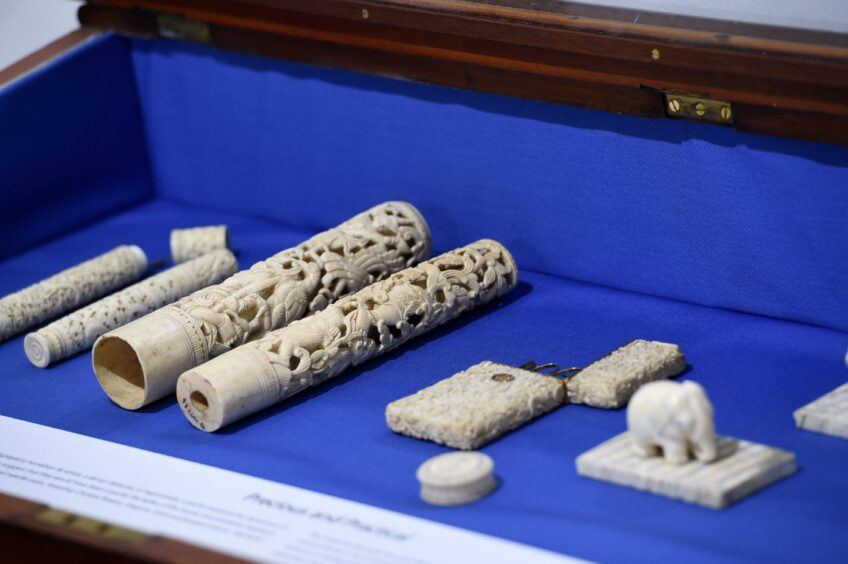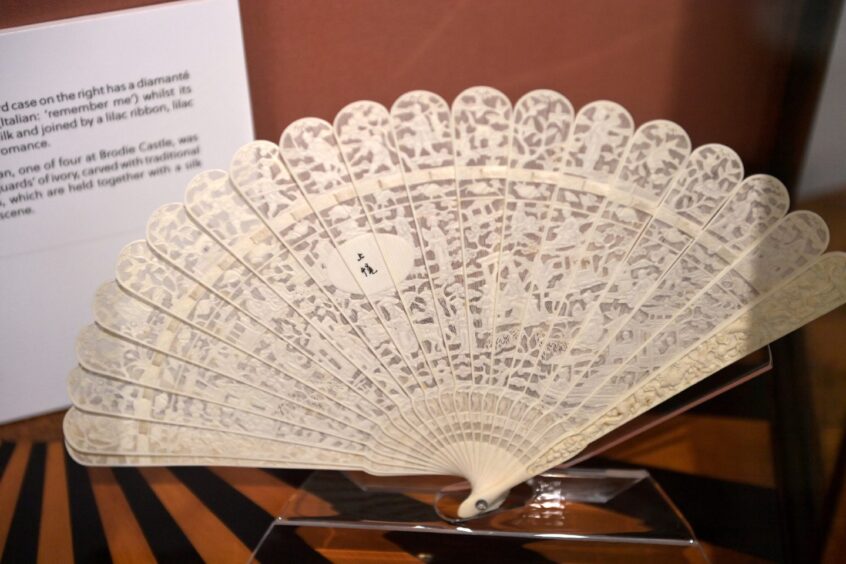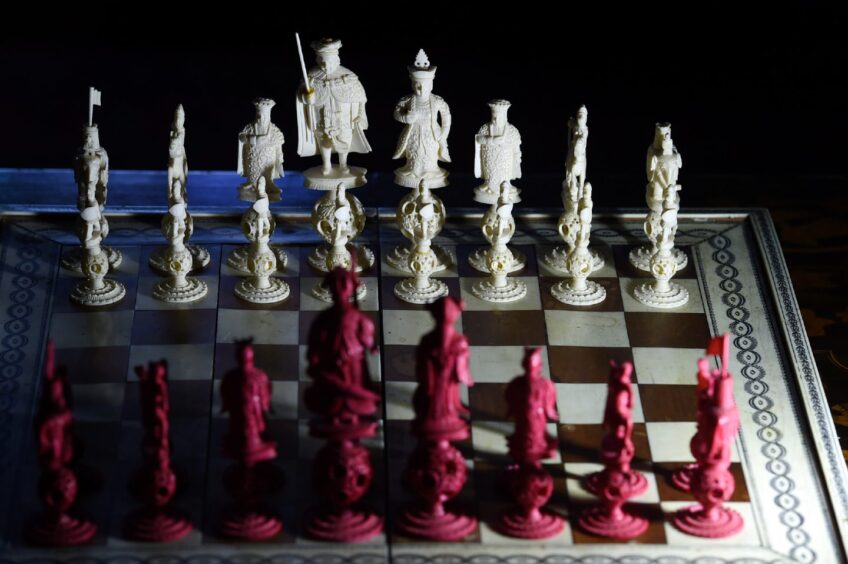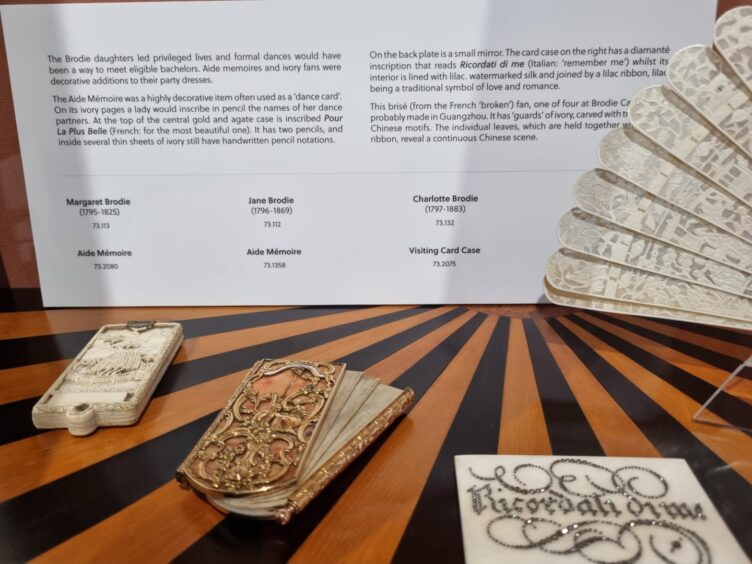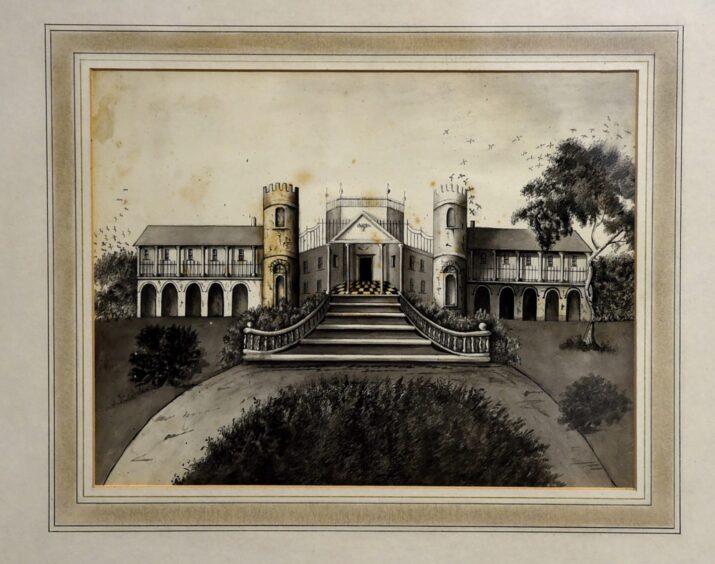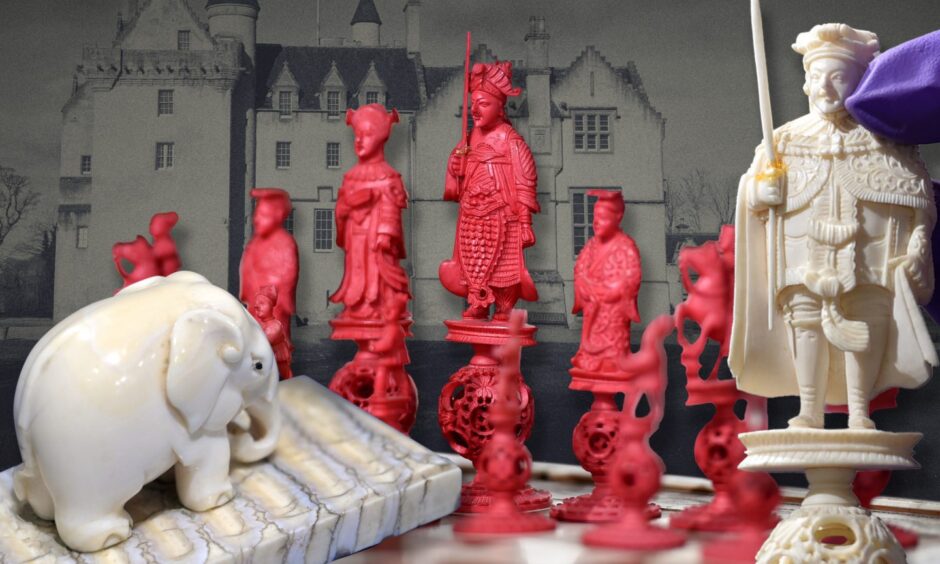
There is, quite properly, much to find concerning about the ivory trade.
Everything in fact.
The slaughter of countless elephants, and other creatures, for their beautiful ivory is surely one of humanity’s darkest shames.
But we can’t alter the past, so perhaps the best thing to do is to preserve carefully and respectfully the ivory objects bequeathed to us from centuries past.
The National Trust for Scotland (NTS) has taken this position with the exquisite collection of ivory at Brodie Castle in Moray.
The castle is normally closed at this time of year, but it’s been open at selected times for guided tours giving visitors context to the presence of ivory in the house and displaying part of the Brodie family collection.
Brodie ivory has been singled out by Molly Brown of the Leverhulme Centre for Anthropocene Biodiversity at the University of York in her PhD to illustrate ivory demand in its many forms, from the mundane to the exquisite.
Controversial and emotive
Molly said: “Elephant ivory has fundamentally shaped societies, cultures and economies throughout human history.
“As a material product, it represents the commodification of one of the most iconic and loved animals on Earth.
“This makes ivory an extremely complicated subject, at times intensely controversial and often highly emotive.”
In terms of the mundane, the collection includes every day ivory items such as a fly whisk, handles, needle cases and even a damp detector.
At the top end, it boasts exquisite inlaid tables, miniature portraits and an exceptional chess set.
Like all the best families of the 18th and 19th century, the Brodies showed their wealth (even when they didn’t really have any) through objets d’art, including fine ivory pieces.
From penury to great riches, the family finances waxed and waned over the centuries.
They waxed massively in the late 18th century when Alexander Brodie made a vast fortune in India, managing supplies and sales within the East India Company.
The Brodies weren’t involved in the ivory trade
It’s important to say that the Brodies weren’t actively involved in the ivory trade, but some of the ivory in the Brodie collection has come from his time there.
The finest pieces in the collection are likely to have come through Alexander’s daughter Elizabeth.
She made a very grand marriage to the Duke of Gordon, bringing to the union a massive dowry, but no children.
When she died, she bequeathed her possessions back to the family at Brodie Castle.
This exceptional chess set is thought to have come from her collection.
See more images of the chess set and hear Brodie Castle events manager Jamie Barron talking about it here.
The Brodie’s Indian adventure
Alexander Brodie’s daughters led privileged lives in India.
The prime objective for young women of the time was to make a good marriage, and with that in mind, the Brodie girls would have attended many formal dances.
May I have the pleasure of this dance?
Such desirable catches could expect to be danced off their feet at balls, so an aide-memoire was essential.
In this they could note down whom they had promised which dance to, and the Brodie girls had the finest aide-memoires imaginable.
Not only were they decorated with gold and agate, as in Jane’s case in the centre of the picture above, but the pages were made of delicate sheets of ivory too.
Jamie finds these little elephants exceptionally poignant.
He said: “They are beautifully crafted, but the sadness remains at the thought of the elephant which died so they could be made.”
Brodie Castle- in India
The Brodie family has left one singular mark on India after their years making money there.
This is Brodie Castle, Madras (Chennai) now known as Thenral.
It was built by James Brodie (see miniature, above) on 11 acres of land given to him by the government in Quibble Island, Adyar, close to Madras.
Style mish-mash
It’s an uncomfortable fusion of styles, ranging from Gothic to Disney-esque, but it survives and is now used to house the school of Carnatic music.
After James Brodie died in a boating accident in 1801, the property was sold to the Arbuthnot banking family.
Brodie Castle Moray re-opens for the season and Friday March 1, and visitors will be able to see the ivory as part of the general tour on offer.
The specific ivory tour with Jamie Barron will carry on intermittently. NTS advises visitors to check for details on the Brodie Castle website.
You might enjoy:
Now’s the time to catch the 116 varieties of historic daffodil at Brodie Castle


